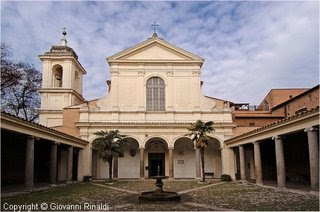 Today's Stational Church is the Church of St. Clement.
Today's Stational Church is the Church of St. Clement.
|
Day XIII. Monday Week II "Lord, may this communion bring us pardon and lead us to the joy of heaven. We ask this in the name of Jesus the Lord. Amen" (Prayer after Communion for Today). |
|||
 |
|||
|
Constantine started to built a church on this site and it was dedicated in 384. This church was destroyed by the Norman invaders (1804). The present church was built on top of the ruins by Pachal II (1099-1118). The former ruins have been excavated so you can now go down and visit all four levels of history. Extraordinary!! Raphael was the architect (1483-1520). |
|||